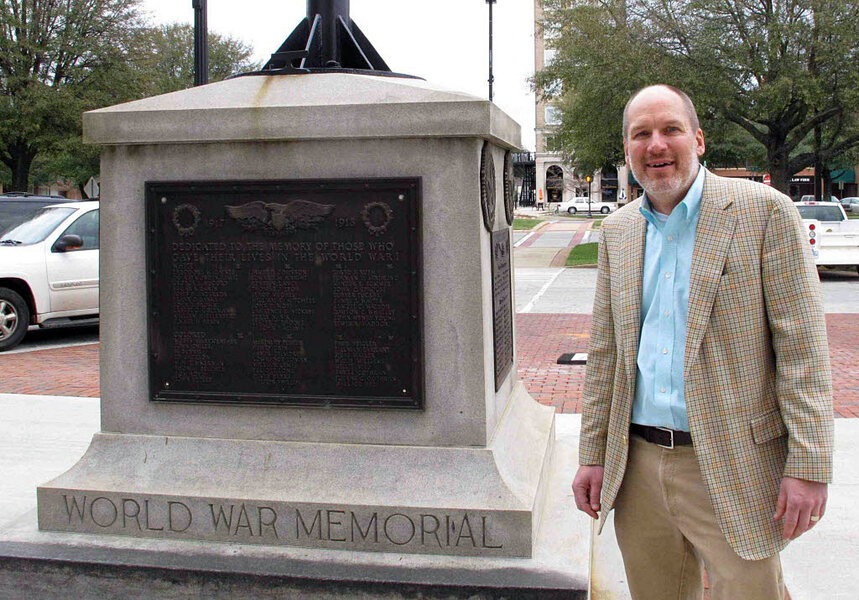Sugar-coating history? Mayor pushes to desegregate South Carolina war memorial.
Loading...
A war memorial in a small South Carolina city serves as more than just a monument to the fallen soldiers of World War I and II; it is a reminder of the country’s racially segregated past. The Greenwood, S.C., memorial currently separates soldiers into two categories, “white” and “colored,” showcasing the racial segregation of the US army during the wars.
But while the mayor of Greenwood would like to alter the memorial to remove painful memories of racial segregation, some historians say its historical integrity should be preserved to serve as a reminder of the past.
"Segregation was the accepted social order of that time," said Eric Williams, who spent 32 years as a historian with the US Park Service, the Associated Press reported. "If we alter the monument, we alter its historical integrity.”
However, the city’s mayor, Welborn Adams, doesn’t agree. A year ago the mayor accepted a challenge from the American Legion, the official owner of the memorial, to privately raise $15,000 to change the monument. The mayor was so confident that he could raise the funds that he took out a loan to pay for them. He planned to have the new plaques dedicated on Martin Luther King Jr. day.
But after the mayor succeeded in raising the funds he ran into some problems. A state law forbids the alteration of historical monuments without the authorization of two thirds of state legislators. Just a few days before the memorial was to be changed, opponents threatened to have the mayor arrested if he went ahead with the alterations.
"I wonder if some of the opposition is racism hiding behind history," Mr. Adams told the Associated Press.
But historians of both races have spoken out against changing the memorial, and some believe that the opposition arose due to a controversial quote from the mayor that was published in the Index-Journal of Greenwood in December.
"I think if history offends people it needs to be rewritten if possible," Adams was quoted saying.
Historians did not agree.
“It is impossible to change history," the Park Service's Williams, who is one of the most vocal opponents of the mayor’s plan, wrote in the Index-Journal in response. "Sometimes past happenings are not to our liking. Our challenge today is to recognize the great social strides our country and community have made since the nation's early days. The Greenwood War Memorial stands on Main Street and does just that. Let's appreciate it and keep its integrity intact with no permanent alterations.”
Instead, Williams would like to see a plaque placed next to the memorial that explains that the military was segregated during that time. Chad Williams, associate professor of African and Afro-American studies at Brandeis University in Waltham, Mass., agrees that an explanatory sign is the best option.
"I think it is important to acknowledge the specific context in how African-American soldiers had to serve in the military," he told AP.
The issues raised in Greenwood are similar to those raised in 2013 in Georgia, when an Atlanta man decided to start a petition to have a Confederate memorial removed.
"It's almost like a black eye or an embarrassing smudge on our culture," the man told a local news channel regarding the carving of Confederate President Jefferson Davis and Gens. Robert E. Lee and "Stonewall" Jackson.
In that case, critics also complained that the man was trying to revise history. The petition failed to attract a significant number of supporters and the monument remains unchanged today. A bill has now been filed to change the Greenwood memorial, but it is unclear whether it will pass with the two thirds needed.
Currently, two sides of the memorial list soldiers from Greenwood County who died in World War I and World War II. The memorial’s third side lists the names of soldiers who died during the Korean and Vietnam War. The third side does not provide any indication of the soldiers’ race because the military was integrated by the time those wars took place.
This report includes material from The Associated Press.








